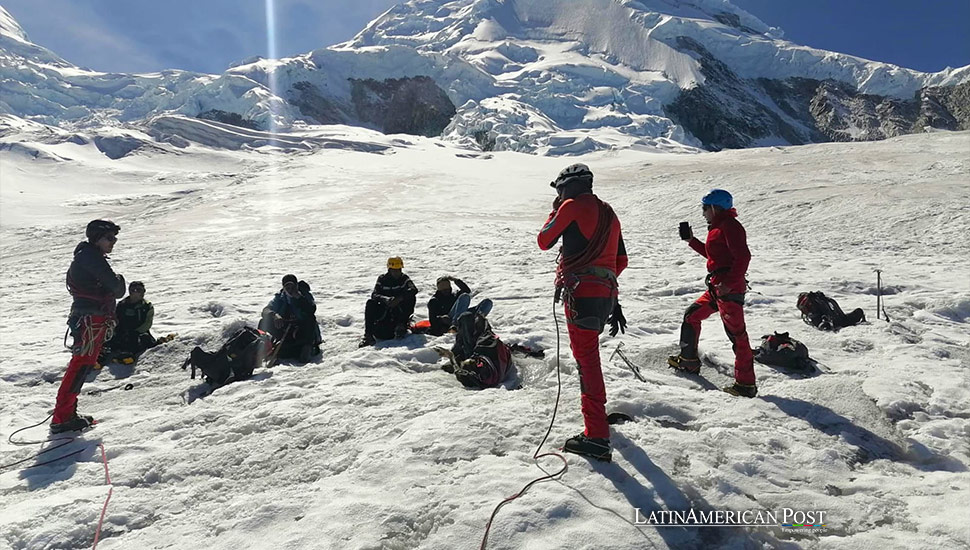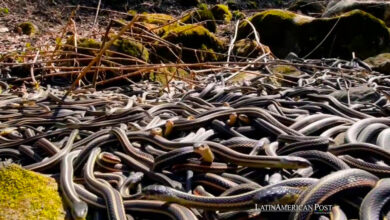After Two Decades, Lost American Climber Found on Peru’s Mount Huascarán

The mummified remains of William Stampfl, a climber who vanished in 2002 while tackling Peru’s highest peak, Mount Huascarán, have been discovered, preserved by the ice following a deadly avalanche.
In a remote part of the Cordillera Blanca mountain range in northeastern Peru, a profound discovery has brought closure to a two-decade-long mystery. The mummified remains of William Stampfl, a 59-year-old American climber, were recently uncovered on the slopes of Mount Huascarán, Peru’s tallest peak. Stampfl had been missing since June 2002 when an avalanche engulfed his climbing party, making his whereabouts unknown until now.
Peruvian police have confirmed that the thawing ice, a phenomenon scientists link to accelerating climate change, revealed Stampfl’s preserved body. Found still clothed, complete with boots and a climbing harness, his identification was confirmed through a passport recovered among his belongings. The case highlights the inherent risks associated with high-altitude climbing and the broader environmental changes affecting our planet’s glaciers.
Mount Huascarán, located approximately 270 miles north of Lima and towering over 22,000 feet above sea level, is part of the stunning Cordillera Blanca range. This area attracts mountaineers from around the globe with its breathtaking vistas and formidable climbs. However, the same beauty that draws adventure seekers also poses significant dangers, as evidenced by the tragic events that overtook Stampfl and his companions.
A Fateful Expedition
In June 2002, William Stampfl, along with fellow climbers Steve Erskine and Matthew Richardson, embarked on a 19-day expedition from California to conquer the summit of Mount Huascarán. The trio’s adventure turned disastrous on June 24 when a massive avalanche hit them. This catastrophic event previously led to the discovery of only Erskine’s body, leaving the fate of the others a mystery for years.
The recent uncovering of Stampfl’s body sheds light on the grim reality of mountain climbing, where the forces of nature can swiftly alter the outcome of even the most meticulously planned expeditions. Stampfl is now at least the third person found deceased in the region this year alone, following the recoveries of an Italian climber and an Israeli man, both of whom also met tragic fates on the unforgiving slopes of the Andes.
Climbing in the Context of Climate Change
The discovery of Stampfl’s remains came when the world witnessed significant glacial retreat across mountain ranges. Just last month, the bodies of five climbers were found on Mount Everest, further emphasizing the widespread impact of global warming on these icy giants. As glaciers continue to melt and recede, hidden dangers and historical artifacts are coming to light, presenting unique challenges and opportunities for scientific study.
The case of William Stampfl is particularly poignant, illustrating the personal stories behind the headlines of climate change and mountaineering accidents. These stories resonate deeply with the climbing community and families who often wait years for answers. They also serve as a sad reminder of the risks associated with climbing high peaks, where the environment is harsh, and the margin for error is slim.
Reflecting on the legacies of those like Stampfl, it is crucial for both the scientific and mountaineering communities to consider the evolving dynamics of mountain landscapes. Increased safety measures, enhanced climber preparation, and greater awareness of the effects of climate change are essential to safeguarding future expeditions. Furthermore, the narratives of climbers who perished in these extreme conditions are vital for understanding and improving the safety protocols within the climbing community.
Also read : Ancient Peruvian Temple Ruins Unearthed by Archaeologists
The recovery of William Stampfl’s remains closes a chapter for his family and friends, providing them with some answers after years of painful uncertainty. It also opens up new avenues of inquiry into the effects of climate change on mountainous regions and the unforeseen dangers these may pose to climbers worldwide. As we look to the future, the climbing tales of the past, such as that of Stampfl and his peers, will inevitably play a crucial role in shaping our understanding of and interaction with the natural world. In the majestic yet dangerous peaks of the Cordillera Blanca, the legacy of those who dared to ascend them continues to echo, serving as a cautionary yet inspiring tale for all who follow.





